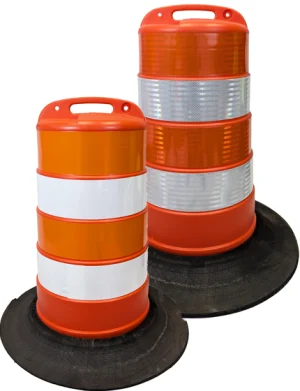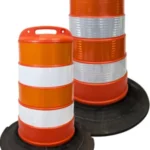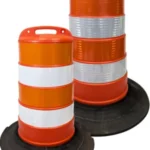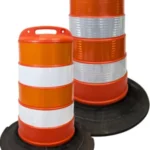Understanding Reflective Sheeting in Traffic Control and Construction Safety
From rural highways to bustling urban intersections, the effectiveness of traffic signs and work zone markers largely depends on their visibility. Reflective sheeting plays a critical role in ensuring that drivers can quickly identify and respond to road signs, especially under low-light or inclement weather conditions. In the United States, the Manual on Uniform Traffic Control Devices (MUTCD) sets the standards for the types of reflective sheeting permissible for road signage, helping ensure consistency, durability, and safety across all roadway systems. Among the most commonly referenced categories of reflective sheeting are Engineer Grade (EG), High Intensity (HI), and Diamond Grade (DG).Why Reflective Sheeting Matters
Traffic signs must remain visible 24 hours a day, seven days a week. During daylight, traditional pigments and surface finishes ensure legibility. However, at night, visibility depends heavily on retroreflective properties—the ability of a material to reflect a vehicle’s headlight beams back to the driver’s eyes. Without adequate reflectivity, signs and devices can blend into the darkness or surrounding environment, putting motorists, pedestrians, and construction workers at risk.The Role of the MUTCD
The MUTCD, maintained by the Federal Highway Administration (FHWA), provides national standards for the design, application, and maintenance of traffic control devices. These include signs, signals, and pavement markings. Over the years, MUTCD revisions have elevated minimum reflectivity requirements to help reduce accidents caused by poor nighttime visibility. Traffic engineers and sign manufacturers must adhere to these standards when selecting and applying reflective materials.Understanding ASTM and Its Classifications
The American Society for Testing and Materials, now known as ASTM International, is a globally recognized organization that develops voluntary consensus standards for various products and materials. In traffic control, ASTM standards provide a framework for categorizing reflective sheeting based on retroreflective performance. By categorizing these materials into “Types” (e.g., Type I, Type III, Type IX), ASTM ensures consistency and comparability across products. This allows agencies to select sheeting that meets or exceeds MUTCD requirements and reliably performs over time.Common Types of Reflective Sheeting
Engineer Grade (EG)
- ASTM Classification: Often Type I
- Appearance and Construction: EG sheeting generally uses enclosed glass-bead technology to reflect light.
- Performance: Provides moderate brightness and is cost-effective, commonly used where long-range visibility is less critical.
- Service Life: Typically around 7 years.
- Typical Applications: Non-critical signage such as parking lot signs and temporary construction markers. EG sheeting may be used on basic barricades in low-speed work zones or on channelizing devices in less demanding conditions.
High Intensity (HI)
- ASTM Classification: Often Type III or Type IV
- Appearance and Construction: HI sheetings incorporate encapsulated lens or microprismatic technologies for higher reflectivity and visibility over a wider range of angles.
- Performance: Significantly brighter than EG, suitable for high-volume roads and areas needing enhanced nighttime visibility.
- Service Life: Around 10 years or longer.
- Typical Applications: Regulatory signs (like STOP signs), warning signs, Traffic Drums, Channelizers, and Type II barricades. HI materials are often chosen for devices placed in areas with moderate to high traffic volumes.
Diamond Grade (DG)
- ASTM Classification: Often Type IX or XI
- Appearance and Construction: DG sheeting uses full-cube or high-efficiency microprisms, returning a large portion of light to drivers, even at sharp viewing angles or long distances.
- Performance: Offers the highest levels of reflectivity and durability, ensuring maximum nighttime and low-light visibility.
- Service Life: Often exceeding 10 years.
- Typical Applications: Critical regulatory and guide signs on high-speed roadways, overhead signage, and Barricades (Type III) in high-risk areas. DG is especially beneficial in challenging environments where rapid driver recognition is crucial.
Practical Applications in Traffic Control Devices
Reflective sheeting is not limited to signs. It’s also used on various traffic control devices that help guide and inform motorists:- Stop Signs: Commonly faced with HI or DG sheeting for optimal visibility.
- Traffic Drums: Traffic Drums often wrapped with HI or DG reflective bands for enhanced nighttime and poor weather visibility.
- Channelizers: Channelizers (cones, tubular markers, vertical panels) typically use at least EG or HI sheeting for nighttime visibility.
- Barricades: Barricades (Type I, II, III) incorporate various levels of sheeting. Lower-intensity sheetings (EG) for Type I in low-demand areas, and higher-intensity (HI or DG) for Type II or III barricades on busier or higher-speed roads.
MUTCD Guidelines and Compliance
Adhering to MUTCD requirements ensures all public roadways maintain consistent minimum standards for nighttime visibility. While upgrading to higher-intensity sheetings is not always mandated, many agencies voluntarily do so for improved safety. Over time, federal guidelines have also encouraged agencies to systematically inspect and maintain their signs and devices, ensuring reflectivity levels remain compliant.- Minimum Reflectivity Levels: Signs and devices must meet or exceed established brightness thresholds.
- Systematic Assessment: Regular inspections, reflectivity measurements, and periodic replacements ensure ongoing compliance and effectiveness.
- Upgrading When Appropriate: Agencies may choose to invest in higher-grade sheetings to reduce long-term maintenance and improve safety, often using DG on critical signs or barricades.
State-Specific Rules and Regulations
While the MUTCD and ASTM standards provide the overarching framework, each state can have its own additional rules and requirements. Local Departments of Transportation (DOTs) may set more stringent standards or guidelines for the type and level of reflective sheeting required on various signs and devices. Before selecting a grade of reflective sheeting, it is crucial to:- Check with your state’s DOT or transportation authority for any state-specific regulations.
- Ensure that the chosen sheeting materials and applications meet or exceed both the MUTCD and your state’s requirements.
- Keep abreast of any updates or changes in local legislation, as standards may evolve over time.
Considerations for Construction and Temporary Traffic Control
Construction zones, with their lane shifts, narrow passages, and unfamiliar configurations, demand heightened visibility. Choosing the right reflective sheeting for temporary traffic control devices ensures motorists have enough time to react, protecting both workers and the traveling public.- Worker and Motorist Safety: Better visibility helps drivers identify and understand new traffic patterns quickly.
- Reduced Liability: Meeting or exceeding MUTCD, ASTM, and state-specific standards helps guard against negligence claims related to insufficient signing or delineation.
Future Trends and Innovations
As vehicles become more automated and connected, reflective sheeting technologies may evolve as well. Future generations could interact directly with sensors, LiDAR, and advanced driver-assistance systems (ADAS), further enhancing roadway safety. These innovations may improve how both human drivers and autonomous vehicles interpret traffic signs and devices, ushering in a new era of transportation efficiency and safety.Conclusion
Reflective sheeting is more than just a surface treatment; it is essential to the safety and efficiency of our roadway system. Understanding the distinctions between EG, HI, and DG sheeting—alongside ASTM standards, MUTCD guidelines, and state-specific regulations—empowers agencies, contractors, and safety managers to select the right materials for their projects. Whether it’s a STOP sign, a set of Traffic Drums, or a Type III Barricade on a high-speed highway, appropriate retroreflective materials ensure that drivers can navigate our nation’s roads with confidence and clarity, day or night.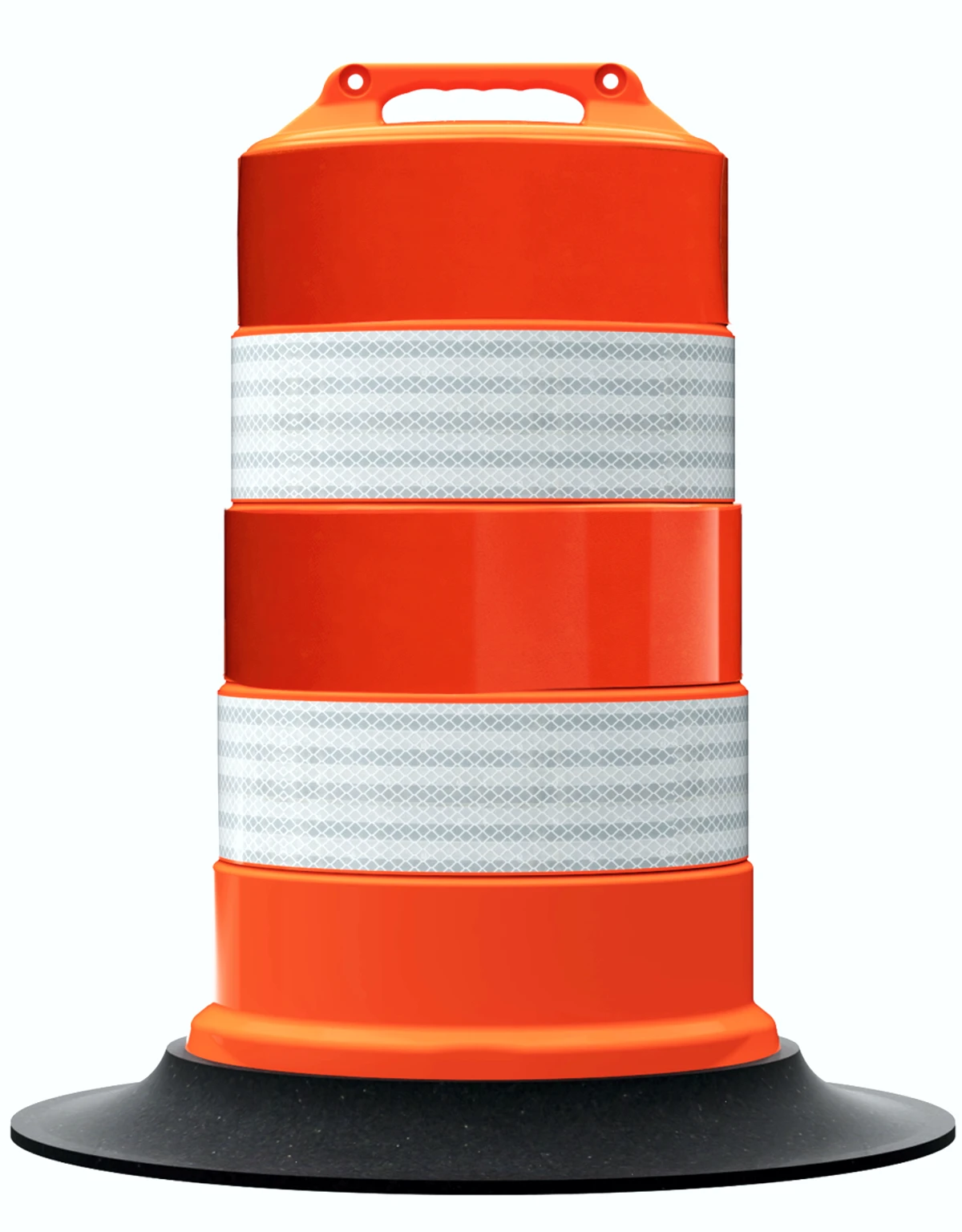
Plastic Drum with 6" DG Stripes & Base
Plastic Drum with 6" DG Stripes & Base
Quick Facts:
-
Durable and Stable Design: The Plasticade Commander™ Traffic Drum features advanced materials for durability and a unique tire locking ring for secure placement in various conditions.
-
Customizable and Compliant: Fully MASH Accepted and MUTCD-compliant, with options for custom branding.
-
Space-Saving Efficiency: Foldable light mount and stackable design make it easy to transport and store, ideal for large-scale traffic management projects.

6' Type 3 Barricade with Plastic Rails
6' Type 3 Barricade with Plastic Rails
Quick Facts:
- 6 Foot Plastic Rails
- Galvanized Steel Frame - 13 gauge
- Choose EG or HI Sheeting - one side only

